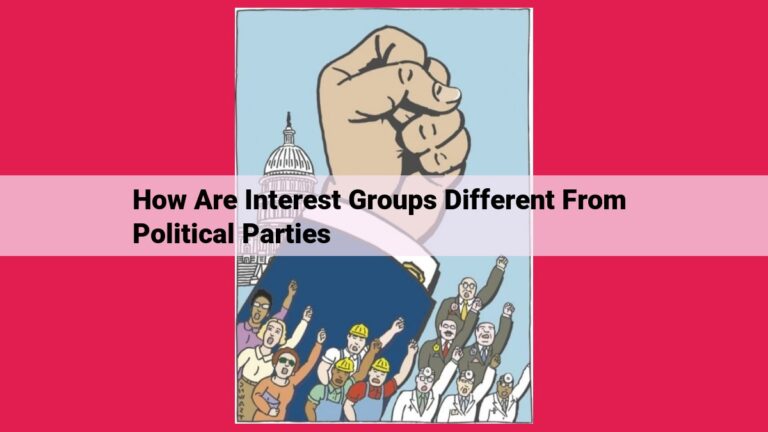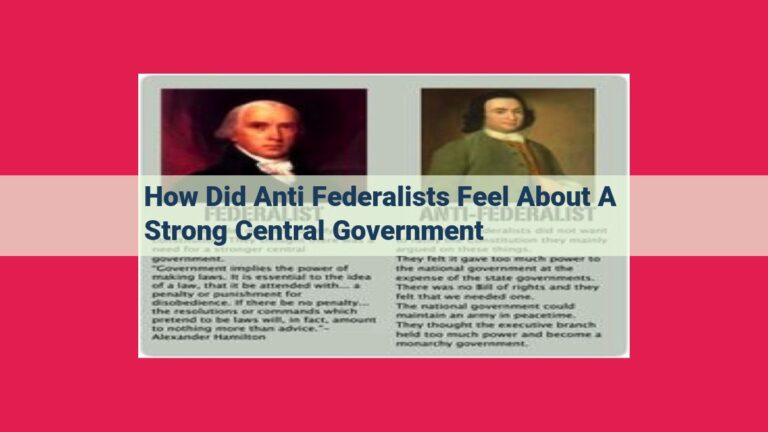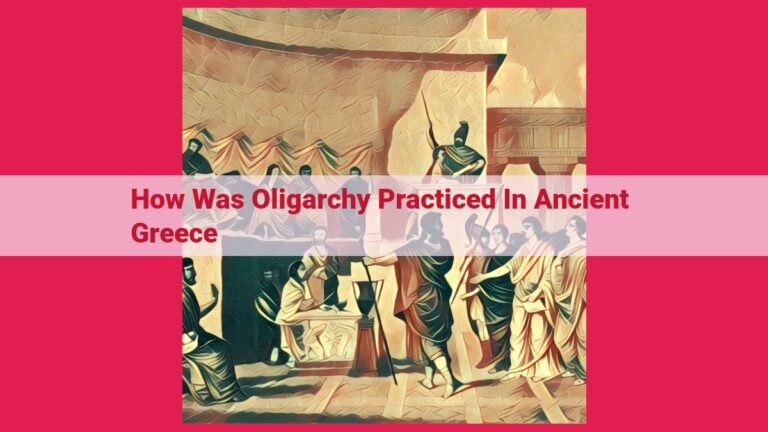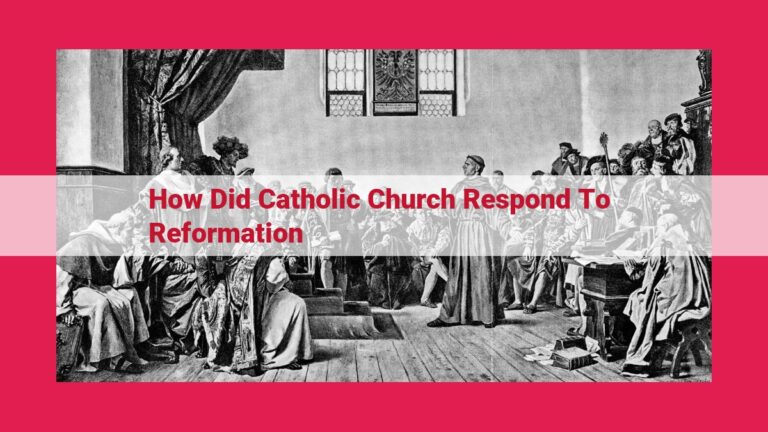The Evolution Of Presidential Power: An Examination Of Constitutional Interpretation, Delegations, And Executive Authority
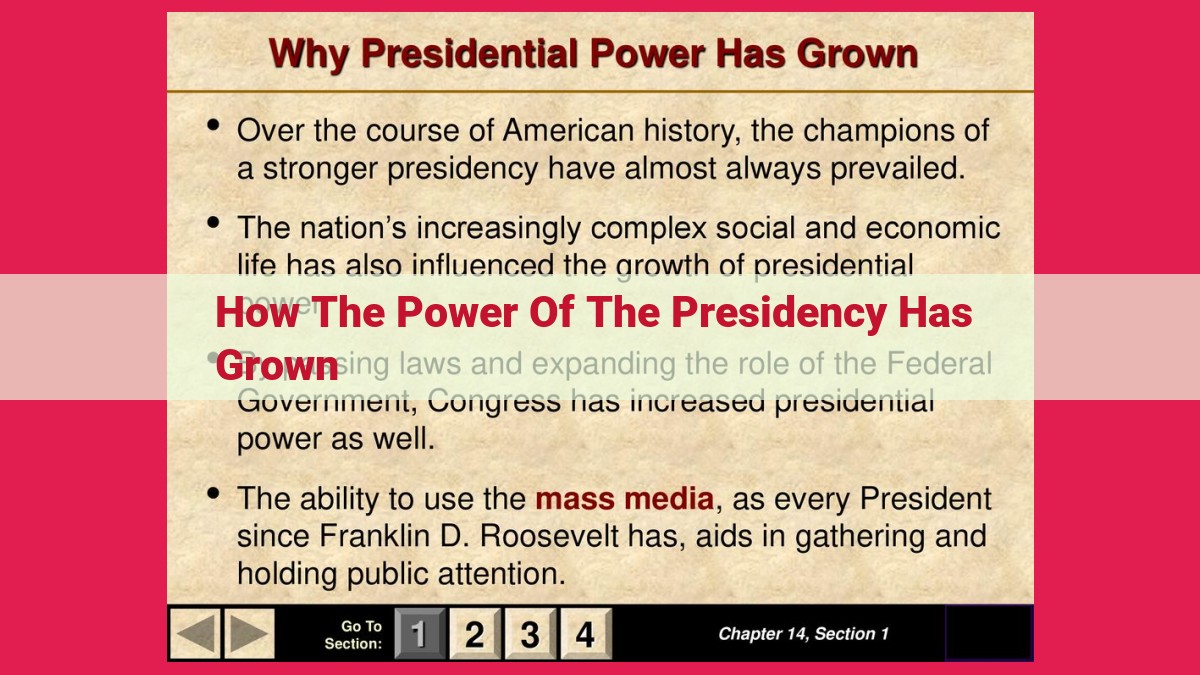
Over time, the American presidency has evolved into a more powerful institution, influenced by constitutional interpretations, congressional delegations, executive orders, public support, media influence, military authority, national security concerns, economic policy, and technological advancements. This expansion of power has raised debates about the balance of powers in government and the implications for democratic principles, with ongoing discussions about the appropriate limits and responsibilities of the presidency.
The Evolution of Presidential Power: A Story of Constitutional Expansion
The American presidency has long been an office of immense power. From its humble beginnings under the Constitution, the presidency has gradually expanded its authority through constitutional interpretations, congressional delegation, executive orders, and public support. This story of growth is a fascinating tale of how one office has come to wield such influence in the American political system.
The founding fathers envisioned a presidency with limited powers, subordinate to Congress. However, over time, presidents have asserted their authority, using the Constitution as a flexible document subject to interpretation. Landmark court cases, such as Marbury v. Madison, have affirmed the power of the executive branch to interpret laws and enforce them.
Congress has also played a role in** expanding presidential power**. By delegating authority to the executive branch through legislation, Congress has allowed presidents to shape policy in a wide range of areas. This delegation has been particularly significant in times of crisis, such as during World War II and the Cold War.
Executive orders are another tool that presidents have used to increase their authority. These directives have the force of law, allowing presidents to enact policy without congressional approval. Executive orders have been used to address a variety of issues, from civil rights to immigration.
Public support is another critical factor in the growth of presidential power. When presidents enjoy high approval ratings, they are able to exercise their authority more effectively. Public opinion can shape presidential agendas and influence the way that Congress and the media interact with the executive branch.
Constitutional Interpretations: The Evolution of Executive Authority
The American presidency, rooted in the bedrock of the Constitution, has witnessed a remarkable expansion of its powers over time. This transformation can be attributed, in part, to the nuanced evolution of constitutional interpretations.
Landmark Precedents and Expanding Powers
The Supreme Court has played a pivotal role in shaping the boundaries of presidential authority. Landmark cases like Marbury v. Madison established the principle of judicial review, granting courts the power to interpret the Constitution and determine its supremacy. Subsequent rulings, such as McCulloch v. Maryland and Ex parte Milligan, further expanded the executive’s scope of action, recognizing the President’s power to strengthen the federal government and take necessary actions in times of crisis.
The “Elastic Clause”: A Source of Executive Flexibility
The Constitution’s “Elastic Clause,” which empowers Congress to make laws “necessary and proper” for carrying out its enumerated powers, has also played a significant role. This broad language has allowed Congress to delegate extensive authority to the executive branch, reinforcing the President’s ability to address complex domestic and international challenges.
Balancing Powers and Preserving Principles
The expansion of presidential power through constitutional interpretations has been a source of ongoing debate. While it has allowed for efficient and robust governance, it has also raised concerns about the potential erosion of the separation of powers and the delicate balance enshrined in the Constitution.
Ultimately, the evolution of constitutional interpretations has played a crucial role in shaping the modern presidency. However, the ongoing discourse on the appropriate extent of executive authority underscores the importance of preserving the fundamental principles of democracy and maintaining a vigilant balance between the branches of government.
Congressional Delegation: The Transfer of Power to the Presidency
In the intricate tapestry of American governance, the concept of powersharing between Congress and the President plays a pivotal role in shaping the balance of power within the federal government. Through a process known as congressional delegation, the legislative branch has delegated significant authority to the executive branch, expanding the scope of presidential power.
Historically, Congress has been the primary body responsible for making laws and overseeing their implementation. However, over time, congress has increasingly delegated its authority to the President in areas such as foreign policy, economic regulation, and national security. This delegation has been driven by various factors, including the complexity of modern governance, the need for rapid decision-making, and the perception of presidential leadership.
One notable example of congressional delegation is the National Emergencies Act of 1976. This legislation grants the President the authority to declare national emergencies and temporarily exercise extraordinary powers. Other examples include the War Powers Resolution of 1973, which gives the President the ability to deploy troops abroad without congressional approval, and the Patriot Act of 2001, which expanded presidential surveillance powers in the aftermath of the 9/11 attacks.
By granting the President these expanded powers, Congress has effectively shifted the balance of power in favor of the executive branch. While this delegation has been justified in some cases as necessary for effective governance, it has also raised concerns about the erosion of congressional authority and the potential for presidential overreach.
The ongoing debate over presidential power raises important questions about the appropriate extent of delegation. How can we ensure that congressional oversight remains robust while also allowing the President to respond effectively to the challenges of the modern world? As the American political landscape continues to evolve, it is imperative that we carefully consider the implications of congressional delegation and its impact on the balance of powers within our democracy.
Executive Orders: Directives with Legal Force
- Definition and significance of presidential executive orders
- How executive orders have been used to enact policy without congressional approval
Executive Orders: Directives with Legal Force
In the realm of American governance, executive orders stand as powerful tools that have dramatically expanded the reach of presidential authority. These directives, issued solely by the President, carry the force of law, enabling the Commander-in-Chief to enact policies without the need for congressional approval.
Definition and Significance of Executive Orders
An executive order is a written directive issued by the President that directs federal agencies to take specific actions or adopt particular policies. Unlike laws passed by Congress, executive orders do not require the approval of the legislative branch. This unique feature grants the President considerable power to shape policy and implement their agenda.
Enacting Policy Without Congressional Approval
The use of executive orders has soared in recent decades, becoming a primary means for Presidents to bypass Congress and advance their policy priorities. By issuing executive orders, Presidents can swiftly implement measures that align with their views, even if they face opposition from the legislative branch.
For example, President Donald Trump used executive orders to withdraw the United States from the Trans-Pacific Partnership trade agreement and to impose tariffs on Chinese imports. President Joe Biden has employed executive orders to address climate change, immigration, and gun control.
Executive orders have become essential tools for Presidents to fill policy gaps and respond to emerging challenges. They provide flexibility and allow Presidents to act quickly and decisively in areas where legislation may be slow or contentious.
Public Support: A Mandate for Action
The American presidency is a powerful office, and the extent of that power is often influenced by the level of public support. Throughout history, presidents have leveraged public opinion to their advantage.
Polls and surveys gauge public sentiment, providing presidents with a barometer of public opinion. This information can guide their decision-making, especially when confronted with controversial or complex issues. By understanding the popular will, presidents can tailor their policies and messages to resonate with the electorate.
Media coverage also plays a crucial role in shaping public perception. Favorable media attention can elevate a president’s standing and amplify their message. Conversely, negative media coverage can damage their popularity and erode their credibility. Presidents skilled in media management can effectively communicate their agenda and build support among the public.
Personal popularity is another factor that contributes to presidential power. A president with high approval ratings enjoys a greater mandate from the people. They are more likely to be seen as legitimate and have their initiatives supported. Conversely, a president with low approval ratings faces an uphill battle. Their proposals may be met with resistance, and their ability to influence policy may be diminished.
In conclusion, public support is a vital wellspring of presidential power. By understanding and leveraging public opinion, media coverage, and personal popularity, presidents can strengthen their authority and effectively shape the nation’s agenda.
Media Influence: Shaping Public Perception
In today’s media-saturated society, the President’s ability to communicate with the public is more crucial than ever. The media plays an unparalleled role in shaping public opinion and narratives. Presidents have mastered the art of utilizing media to their advantage, from FDR’s iconic fireside chats to Trump’s ubiquitous tweets.
The media serves as a powerful amplifier, broadcasting presidential messages and interpretations of events to a vast audience. Through press conferences, speeches, and interviews, presidents can set the agenda and frame the debate on critical issues. The media’s constant coverage of the president also provides a platform for agenda-setting, allowing them to highlight specific issues and influence public priorities.
Moreover, the media’s constant scrutiny can both boast and tarnish a president’s image. Positive media coverage can boost popularity, while negative portrayal can erode support. Presidents are acutely aware of this dynamic and strive to cultivate favorable relationships with the press. They often engage in media manipulation techniques, such as leaking information or staging events, to shape media coverage and influence public opinion.
In conclusion, the symbiotic relationship between the president and the media has a profound impact on the balance of power. The media’s ability to shape narratives and influence public perception gives presidents an unprecedented platform to advance their agendas. However, the media also acts as a watchdog, holding presidents accountable and challenging their actions. This dynamic tension is essential to ensure that presidential power is subject to scrutiny and remains responsive to the will of the people.
The President’s Commander-in-Chief Role and the Expansion of Presidential Power
As the Commander-in-Chief of the United States Armed Forces, the President holds immense power in shaping foreign policy and exercising military authority. Throughout history, this authority has expanded significantly, often in response to international crises and national security concerns.
The President’s role in foreign policy extends beyond diplomacy. They possess the power to deploy troops, launch military strikes, and authorize covert operations. These actions can have profound impacts on global affairs, influencing the balance of power and shaping the course of events worldwide.
Historical Examples of Presidential Power in Foreign Policy
- The Korean War (1950-1953): President Harry S. Truman deployed troops to South Korea without seeking congressional approval, relying on his constitutional authority as Commander-in-Chief.
- The Gulf War (1990-1991): President George H.W. Bush authorized Operation Desert Storm, a military campaign against Iraq, after the Iraqi invasion of Kuwait.
- The Afghanistan War (2001-present): President George W. Bush launched the war in response to the September 11th attacks, invoking the use of military force to combat terrorism.
The Debate Over Presidential War Powers
The expansion of presidential power in foreign policy has sparked ongoing debates about the balance of powers in government. Many critics argue that the President’s authority to wage war should be subject to congressional approval, as the Constitution intended. Others maintain that the President, as Commander-in-Chief, must have the flexibility to respond quickly to international threats.
This debate is likely to continue as the President’s role in foreign policy and military authority remains a significant factor in shaping global events.
National Security: The Evolution of Enhanced Surveillance and Counterterrorism
In the post-9/11 world, the balance between national security and civil liberties has been a constant topic of debate. Presidents have asserted expanded powers in the name of protecting the nation, but these actions have often raised concerns about the erosion of constitutional rights.
Enhanced Surveillance: Watching Over the Citizenry
One of the most profound shifts in presidential authority has been the rise of enhanced surveillance. The Patriot Act, passed shortly after the 9/11 attacks, granted the government broad powers to collect data on American citizens in the name of fighting terrorism. This includes the ability to obtain phone records, track internet activity, and even investigate financial transactions without a warrant.
While these measures have been defended as necessary to prevent future attacks, critics argue they violate the Fourth Amendment’s protections against unreasonable searches and seizures. The use of surveillance without individualized suspicion has created a chilling effect, making people hesitant to engage in protected activities.
Detention and Interrogation Techniques: The Trade-Off Between Security and Justice
The war on terror has also seen the expansion of the President’s authority to detain and interrogate suspected terrorists. The Military Commissions Act allowed for the creation of overseas detention facilities, where prisoners could be held indefinitely without trial. Enhanced interrogation techniques, including waterboarding and sleep deprivation, were also employed.
These measures have been justified as necessary to extract valuable intelligence that could save lives, but they have also been widely condemned as torture. The use of such techniques has damaged America’s international reputation and undermined its commitment to human rights.
Drone Strikes: Targeted Killing in the Name of National Security
President Obama’s use of drone strikes in the Middle East and elsewhere demonstrated an unprecedented expansion of presidential power. The use of these unmanned aerial vehicles allowed the President to order the targeted killing of individuals suspected of terrorism, even if they were American citizens.
While drone strikes have been defended as precise and effective, they have also raised concerns about extrajudicial killings and the blurring of the line between war and law enforcement. The use of drones has also fueled resentment in the countries where they are deployed.
The Ongoing Debate: Balancing Security and Rights
The growth of presidential power in the name of national security has sparked intense debate about the appropriate balance between security and civil liberties. Critics argue that the expansion of executive authority has come at the expense of democratic principles and fundamental rights. They call for greater transparency, accountability, and judicial oversight of these enhanced powers.
Supporters of the heightened security measures argue that they are necessary to protect the nation from terrorism. They contend that the challenges of the 21st century require bold action from the President in order to keep Americans safe.
The debate over enhanced surveillance, detention practices, and drone strikes is likely to continue for years to come. As the threat of terrorism evolves, the appropriate extent of presidential power will remain a difficult and contested issue.
The President’s Economic Powerhouse
The Oval Office is not just a symbol of political authority; it also holds the key to the nation’s economic well-being. The President, as the Chief Executive, plays a pivotal role in shaping domestic economic policies that impact every American.
The President’s influence extends to proposing and signing legislation that sets the framework for taxes, trade, and industry regulations. These policies can dramatically affect economic growth, job creation, and consumer spending.
Beyond legislation, the President can use executive orders to implement policies without congressional approval. For example, President Biden used executive orders to regulate greenhouse gas emissions and support critical infrastructure projects.
The President’s authority also encompasses regulating markets, particularly in financial and environmental domains. Agencies like the Federal Reserve and the Environmental Protection Agency follow presidential directives to ensure stability and protect the public interest.
During economic crises, the President can intervene with powerful tools. The 2008 financial crisis saw the government inject billions of dollars into the economy and bail out major banks, saving the financial system from collapse.
The President’s economic power is not without its critics, who argue that it can lead to executive overreach and undermine democratic principles. However, supporters maintain that a strong presidential role is necessary to address complex economic challenges and ensure a thriving economy for all Americans.
